Student Blog
Cara
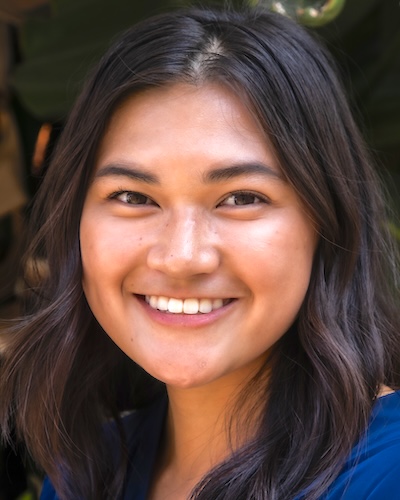
Food for Thought ⟩
February 21, 2025, by Cara
First, it started with cookies and cupcakes. Next, banana bread. Then a peach galette, lemon bars, pretzels, scones, more cookies, and bagels. Like many during the pandemic, the kitchen was my escape, using carb-heavy and sugary treats to detach my mind from the stress around me. Since then, baking has become my go-to form of self-care, and here’s why I think it should be yours too.
Baking provides a creative outlet
Whenever I’m baking, I can’t help but pretend I have my own Food Network show. Most of my creations turn out both edible and delicious, yet the process to that result isn’t always as seamless as the celebrity chefs make it look. But that’s what I love about baking – the unpredictability. Whether you follow the recipe exactly or not, no two outcomes are ever the same. From substituting ingredients to adding mix-ins or salvaging a failed dough – it all makes something uniquely yours. After all, perfection is overrated, and the most memorable treats are often the ones where we accept things as they are and allow ourselves to get a little messy along the way.

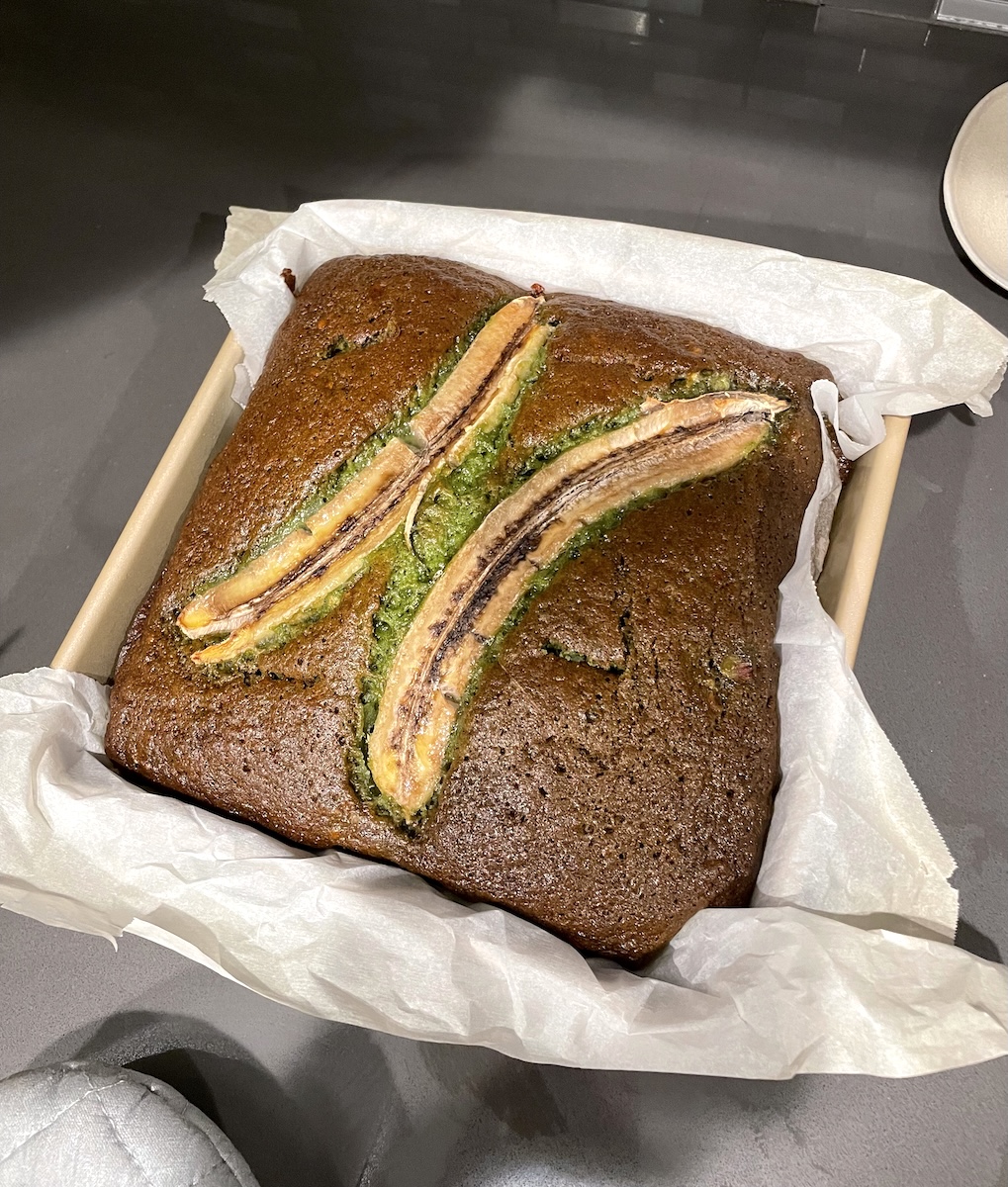
My recreation of matcha banana bread from the book, Mind Over Batter.
Baking promotes mindfulness for both yourself and others
We’ve all heard about the benefits of mindfulness — how it reduces stress and improves happiness. Baking provides those same benefits. It forces you to be present and attentive by engaging both your senses and body. For example, measuring or inhaling the lovely aroma as it bakes is therapeutic, encouraging you to not go through the motions to feel more connected to what you’re making. Additionally, consider how mixing the dough not only brings everything together, but also serves as an outlet to release frustration. I notice that my nerves and racing thoughts dissipate when I’m fully immersed in the recipe, and I feel a greater sense of peace and accomplishment when I see the final dish.
What also makes baking more restorative is that recipes are meant to be either baked together or shared with others. Everything I learned about baking, I learned from just being with my mom and grandma in the kitchen. I always enjoyed hearing how the recipes we made were a continuation of traditions. Moreover, no matter the occasion, dessert serves as the catalyst for connection. It’s comforting to connect with friends and family over something yummy while reminiscing about our days and sharing a few laughs. Plus, it’s all the more fun and rewarding when there’s a team challenge involved.

Our OS minor faculty tried decorating cake while unable to hear, see, or speak. Check out how they did here!
Baking provides a sense of purpose
The heart of baking is giving. Whether it’s sharing something you made, recipes passed down through generations, or creating lasting memories.
In many cultures, food is the concrete manifestation of love. It’s not about expecting anything in return; it’s the sense of helping in some way. There’s an incredible satisfaction from seeing people enjoy the fruits of my labor, knowing it offers them comfort, uplift, or a sense of being appreciated. Simply put, making others feel good makes us feel good. As, they say, “sharing is caring”, and that’s the kind of thing that strengthens our relationships, and, in turn, enhances our well-being.

Giant cookie to celebrate my friend getting into law school!
Here’s a few of my favorite recipes for when you’re feeling overwhelmed or looking for something new to try. Happy baking!
You’ve Met Your (Banana) Matcha Loaf from Mind Over Batter
A whole book talking about baking as therapy! Jack Hazan, a psychotherapist and baker, shares recipes to support different needs — whether you’re feeling anxious, in need of connection, or practicing self-care. He also includes affirmations, mindfulness exercises, and baking tips. See the recipe below!

Reprinted from Mind Over Batter by Jack Hazan, © 2023. Published by Chronicle Books.
⋯

Grad Application . . . Let’s Talk About It ⟩
December 18, 2024, by Cara
Since deciding to pursue a career in OT, I knew that graduate school would be an eventual part of my academic journey. I’ve recently finished the graduate school application process and while it’s fresh in my mind, I have some tips to share!
1. Choosing Programs — What Do You Want Out of It?
When selecting a program, it’s important to consider what you want to gain from the experience. Each program is unique in its own way, so here are some factors I considered when choosing the right fit for me:
- Curriculum
Does the program offer a good balance between theory and clinical work? Think about whether you want to understand more of the theoretical foundations of what you’re doing, or if you’re someone who prefers to jump into clinical work and learn as you go. - Opportunities
What resources does the program offer? Look into opportunities beyond lab and fieldwork, such as community clinics where you can gain experience early on. Additionally, research the fieldwork placements — are they local or global? - Diversity
As OT helps people from various backgrounds, consider a program that values diversity. Research how diverse the student body, faculty, and the community outreach are. Exposure to different perspectives in your cohort helps you grow your empathy and awareness. And with the guidance of faculty across diverse subjects, you’ll learn the necessary skills to help people holistically.
2. Observation / Volunteer Experience
Some programs may require 40–80 hours of relevant experience, which may seem daunting, but it’s totally doable! I gained mine by networking through family friends and reaching out to clinics I found through Google. Even if experience is optional, I strongly encourage you to still do it. Such experiences helped me see all the ways I can make a difference as an OT, discovering the settings and specialties that resonated most with me, and reaffirmed my passion for the field. If you’re unsure where to start, check out our list of volunteer and observation opportunities across the US and internationally.
3. Letters of Recommendation
Most OT programs require three letters of recommendation from a professor, an OT you’ve shadowed or interned with, and an employer. It’s important to be intentional about who you ask and what they can add to your application. For example, my professor emphasized my work ethic, compassion, and introspection. An OT I shadowed focused on my time alongside them and how I was as their shadow. My employer commented on my creativity, communication, dependability, and teamwork skills, drawing from my role as a Student Ambassador. In short, don’t select recommenders solely based on their titles — consider how each can showcase different aspects of your strengths to make yourself a more well-rounded applicant.
4. Personal Statement
Writing a personal statement is undeniably one of the most challenging yet vital parts of the application process. While it’s easy to think you need to fit an “ideal student mold”, remember that programs value individuality. Unlike most applicants, I never had a direct experience with OT that inspired me to pursue the career. Rather, my “aha” moment was from my former job as an elementary after-school aide. While not directly related to OT, I was able to reflect on this experience to demonstrate essential OT principles such as empathy, problem-solving, and supporting others in overcoming challenges. Often, the experiences that seem trivial or we initially take for granted teach us the most about who we are and what we’re meant to do. So, don’t underestimate those unique experiences — they may provide the most meaningful insights into what you can offer to the field.
5. Interview
Interviews are a double-edged sword. I was excited when I got one, thinking, “Yes, I’ve made it to the next round!” But then the anxiety kicked in – “What kind of questions would they ask? What if I blanked out completely? What if I say the wrong thing?” Here’s how I overcame the jitters.
- Prepare
Anticipate common interview questions, including why you chose OT, why you chose that specific program, and experiences about teamwork and problem-solving. Some programs may even have you role-play as an OT to assess your empathy and communication skills. - Mock interviews
As they say, “practice makes perfect!” I suggest doing mock interviews with those experienced in the process, like professors or TAs. For me, I prepared with my dad, thanks to his extensive experience on hiring committees. I admit that I cried three times out of nerves (haha!). Nevertheless, by the day of the actual interview, I made it through without any tears. Also, some programs provide the opportunity to virtually meet with the admissions director to answer any questions you may have. If offered, I suggest taking it, as it helped me get a better sense of what the school was looking for and allowed the program to familiarize themselves with me. - Ask questions
As my dad advised me, “Don’t stay silent — you might miss your shot.” While it may sound blunt, speaking up by asking questions shows you’re invested in the program while helping you determine if it’s the right fit. Most interviews include a Q&A with current graduate students, giving you a chance to learn candidly about the program’s strengths and weaknesses. Ask about what’s important to you, whether it’s student-student support, student-faculty relationships, fieldwork, or capstone projects. Remember, there’s no such thing as a stupid question! - Relax
During the actual interview, remember that the interviewer is there to get to know you, not to judge you. It’s easy to get caught up in thoughts like, “Do I have enough experience?” or “This program is so prestigious — am I good enough?” But, remember you earned the chance to be there, and that says a lot about you having something valuable to offer. Take a deep breath and know that you can do this, because you can.
The application process can be daunting, and perfectionism often makes it feel even more stressful. I overthought a lot, but I had to remind myself that getting through it is better than perfect, and that everything will fall into place as it’s meant to. Even when it feels uncertain, remember, it’s not about where you are now, but who you’re becoming along the way. I hope these tips help you feel more prepared and confident as you approach application season. If you ever want to talk more about the process, feel free to reach out. Good luck!
⋯

My OS Minor Recommendations ⟩
November 13, 2024, by Cara
Classes Life Hacks School/Life Balance
Spring course registration is already underway, and if you’re still on the hunt for classes to fill up your schedule, you’ve come to the right place! Whether you’re considering a minor in OT or just looking to create a healthier and happier lifestyle for yourself — here are my recommendations.
OT 101: Caring for Your Self: Engaging in Healthy Habits and Routines
OT 101 is all about YOU! This course helps you learn about self-care practices to incorporate in your everyday life, like mindfulness, setting goals, and time management. Throughout the course, I was paired up with another student for weekly meetings where we reflected on our self-care experiences and feelings. Sometimes we did activities together, like yoga, drawing our breath art, or eating. It was a great experience that helped me improve self-awareness and also built a lasting friendship. Since taking this class, I’ve realized how self-care is not a luxury — it’s a necessity for overall wellness. I’ve noticed improvements in my productivity, calm mindedness, and greater self-acceptance by making time for myself. College can often feel like an endless race where we neglect our health and personal needs, but taking time for self-care can make all the difference.

Me and my partner, Mahalia, doing yoga!
OT 251: Across the Lifespan: Occupations, Health, and Disability
In OT 251, I learned about how people grow and change as they go through life and how this affects the activities they find meaningful. We explored human development by looking at different factors like biology, psychology, society, and culture, and how these all connect to shape what people are interested in and value in their lives.
What made this class really fun was the emphasis on building a positive and engaging learning community through peer learning. I often worked in groups on case studies, role-played different stages of development, and did discussions where my group mates and I reflected on our development and how it affects what we do. I really connected with my peers through both our shared experiences and differences, deriving new insights on how development is nuanced. And I still keep in touch with them to this day!
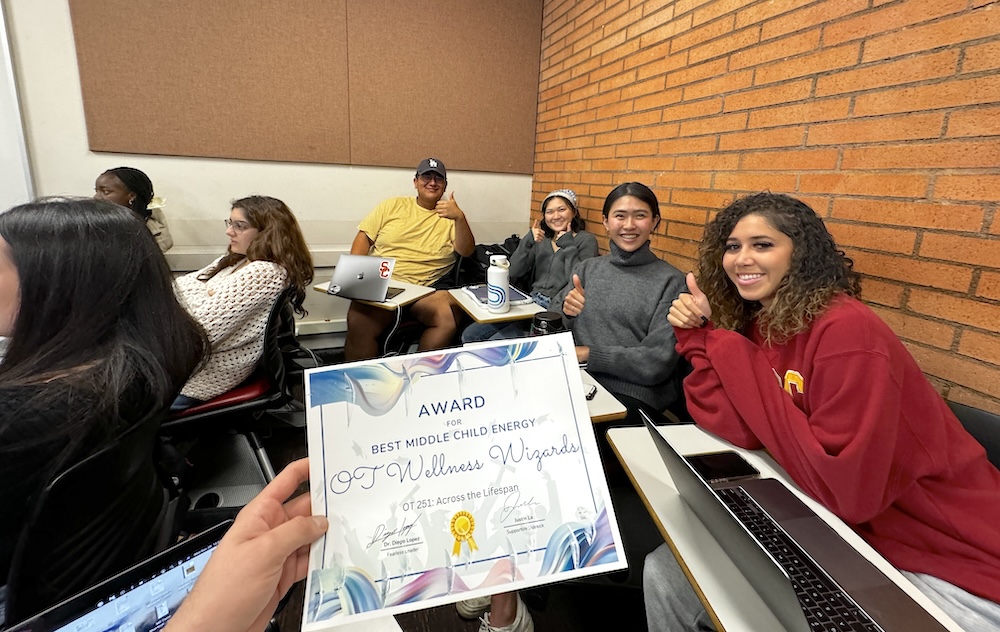
At the end of the semester, my group and I, called the “OT Wellness Wizards,” received the award for “Middle Child Energy.”
OT 340: Animal and Human Interconnection in Daily Life
If you love animals, OT 340 is a must! This course explores the relationship between humans and animals. I learned about K9s, therapy dogs, foster animals, among many others. Occasionally, some furry friends came to visit too. As part of the course curriculum, I spent 8 hours interacting with animals to further understand how humans and animals affect one another. I volunteered at a local shelter, walking German Shepherds for two hours each week. The experience was rewarding, teaching me about humility, compassion, and loyalty. I also found it amazing how animals still love us no matter how we treat them, and continue to persevere to live a better life than before. If that doesn’t convince you, I don’t know what will!
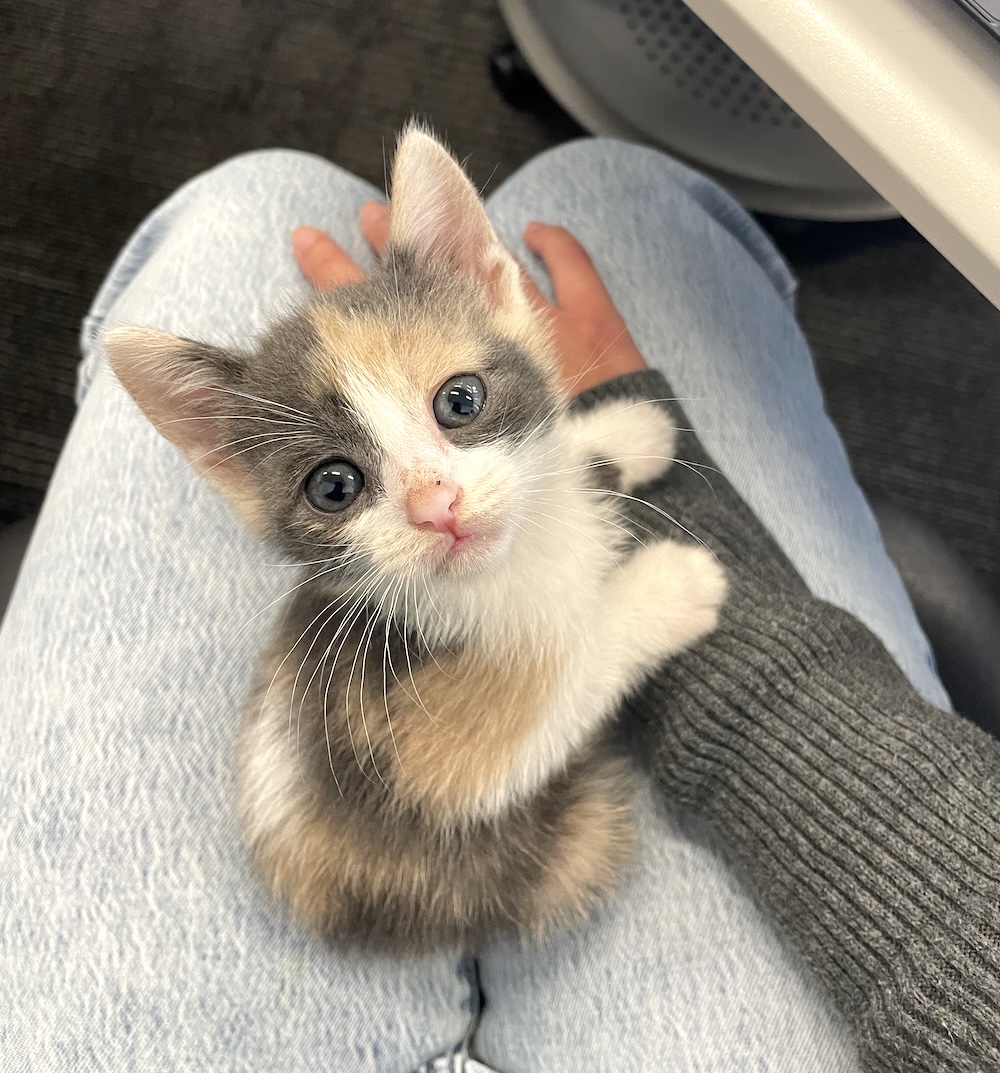
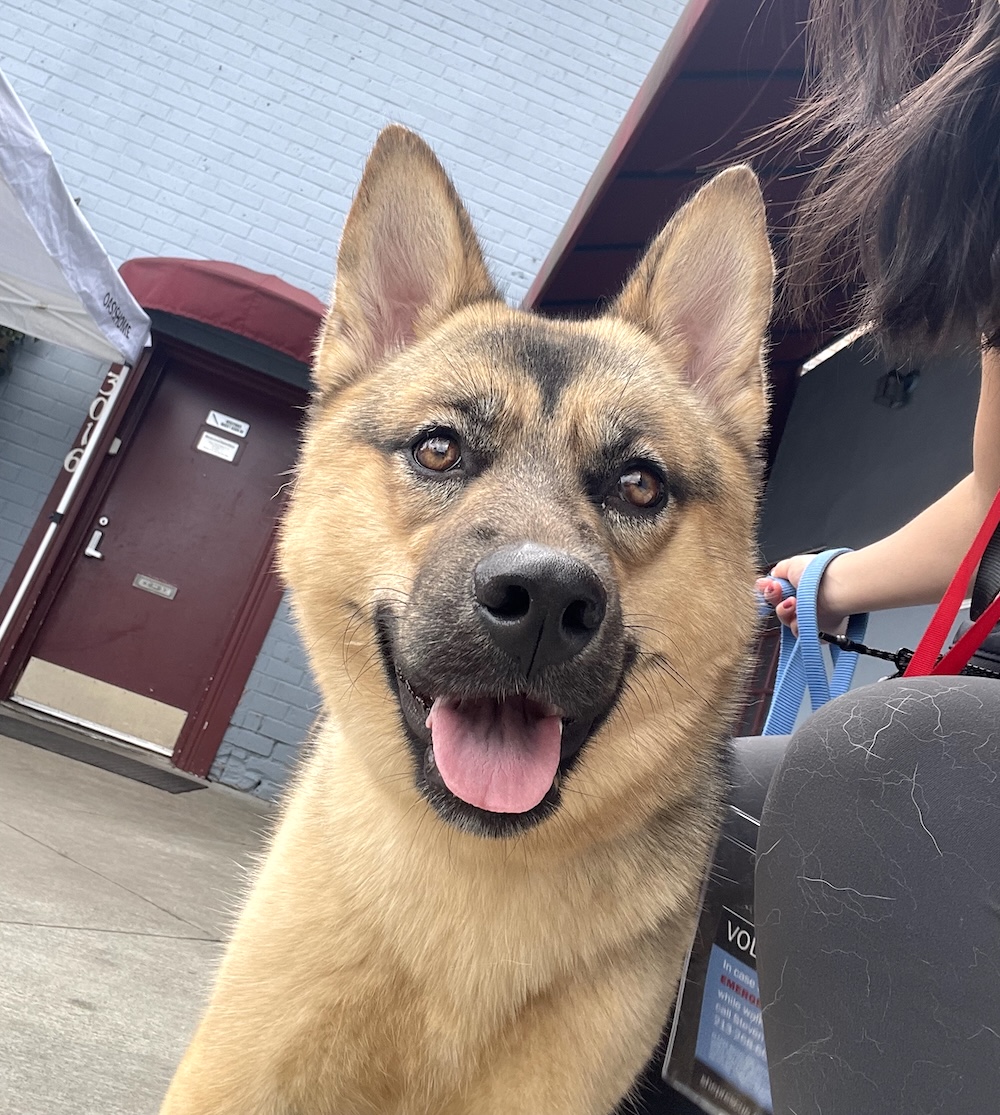
These courses are just a taste of what the OS minor has to offer, and I encourage you to consider them as you finalize your spring schedule. They will deepen your understanding of both yourself and others while providing practical skills you can apply in your everyday life. Check out our other OS courses here!
⋯

More than Observation: Insights from My Shadowing Experiences ⟩
September 26, 2024, by Cara
In preparation for applying to OT school, I was intimidated by the requirement of 80 observation hours. How could I accumulate that much experience in just one summer? Luckily, with a little networking through family friends and help from Google, I shadowed across three different settings: inpatient (acute care), school-based, and outpatient. Each experience not only exposed me to the field but taught me the importance of learning with an open mind.
Starting with inpatient (acute care), I explored a variety of specialties, from ICU to neurology, burns, orthopedics, pediatrics, cardiac, and trauma. The focus is to help the patient get better and decide where they go next, whether it’s home, a nursing facility, or daily rehab. As patients recovered from heart surgery, spinal injuries, strokes, work-related injuries, neurological trauma, or burns, the OTs addressed bedside mobility, dressing, personal hygiene, range of motion, and consciousness. They assessed how well the patient could do the above without assistance.
While I had always thought I would end up in pediatrics, my visit to the burn unit sparked a newfound interest. Seeing such severe injuries is not for the faint of heart, but there’s something about the strength and progress of the patients that drew me in. I felt more challenged because of the complexities of the burns and the intricacies that come with treating them. Moreover, the reliance on visual aids, such as the burn itself and images of post-surgery skin grafts provided greater insight into a patient’s range of motion, independence, and pressure tolerance than written notes. As a visual learner, this resonated with me.
Moving onto school-based OT, I observed high-functioning students as OTs focused on improving fine motor skills like handwriting, pencil grasp, and line spacing. It was interesting to see differences in letter formation and recognition; some reversed letters or wrote from bottom to top. I also couldn’t help but notice a fisted grasp pattern among the students, and that I, too, grip my pencil incorrectly instead of the proper tripod grasp. Furthermore, I learned standardized tests like the Beery VMI and Bot-2, which determine eligibility for OT. These included activities like drawing, comparing shapes, and transferring or sorting objects to assess visual and motor skills. I got to test these on myself, in which I discovered that I needed to improve my manual dexterity.
Finally, in an outpatient setting, I got to be a little kid again, recognizing how play can help make learning fun. Here, OTs used play-based interventions to improve kids’ independence and achieve their goals. Equipment included a rock wall, hammock, and interactive games. At first glance, it seems like this is just a setting to let loose. But, play-based therapy addresses skills like problem-solving, fine motor, bilateral coordination, and self-control. For example, I learned that playing on a scooter can strengthen the core, playing with slime helps with sensory integration, and using tweezers to sort colors develops the pincer grip needed to hold a pencil or utensil.
From the hospital, classroom, and indoor playground, each experience has made me realize all the ways I can make a difference as an OT. Maybe you’re someone who already has their heart set on a certain specialty. Still, I encourage you to explore the many faces of OT. You might discover new interests, identify skills that need improvement, or even realize that you could use some OT as well!
⋯





